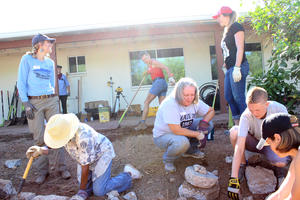 Homes and businesses across the globe are using rainwater for a long list of purposes — car washes, gardening, showering — and Tucson is no exception.
Homes and businesses across the globe are using rainwater for a long list of purposes — car washes, gardening, showering — and Tucson is no exception.
Even rainwater beer exists.
Rainwater harvesting involves the collection of rain for use in activities that would normally require water from hoses or sinks. While the process is nothing new, it’s gaining popularity.
“Think of any city in the world,” Joaquin Murrieta-Saldivar, cultural ecologist with the Watershed Management Group, says. “Tucson, New York, Mexico City, Singapore, London. What are the sources of water? Usually it’s a river, lake or the aquifer, and that’s it. Why is it never the rain?”
Murrieta-Saldivar says on average, between 30 and 40 percent of residential water goes toward outdoor activities, such as gardening.
“Why not use the rain?” he says, adding that harvesting rainwater, thus minimizing other water usage, can help the environment and decrease your water bill.
Collected rainwater is often used for gardening and outdoor activities. However, when filtered, it can be used for drinking, cooking, and many other tasks.
“The more water we save, the better for the environment,” Murrieta-Saldivar says. “You can use rainwater for pretty much everything; it’s just a matter of what you want to do with it.”
Rainwater harvesting in Tucson: Better for environment, reduced water bills
